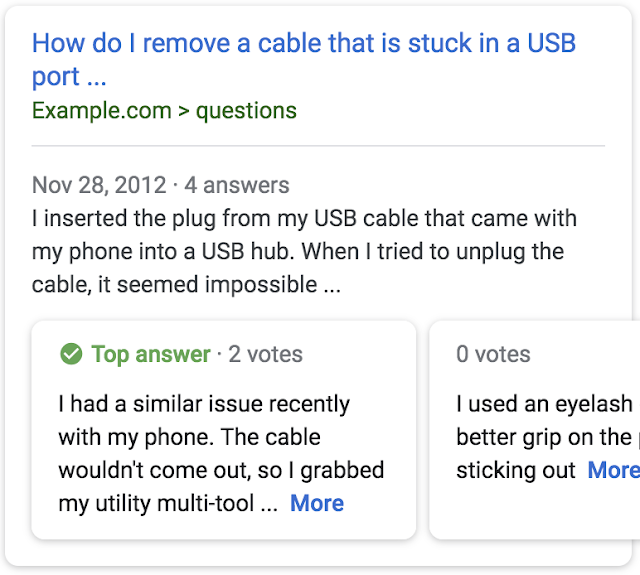At Google I/O in May, we launched Rich Cards for Movies and Recipes, creating a new way for site owners to present previews of their content on the Search results page. Today, we’re expanding to two new verticals for US-based sites: Local restaurants and Online courses.


Evolution of search results for queries like [best New Orleans restaurants] and [leadership courses]: with rich cards, results are presented in new UIs, like carousels that are easy to browse by scrolling left and right, or a vertical three-pack that displays more individual courses
By building Rich Cards, you have a new opportunity to attract more engaged users to your page. Users can swipe through restaurant recommendations from sites like TripAdvisor, Thrillist, Time Out, Eater, and 10Best. In addition to food, users can browse through courses from sites like Coursera, LinkedIn Learning, EdX, Harvard, Udacity, FutureLearn, Edureka, Open University, Udemy, Canvas Network, and NPTEL.
If you have a site that contains local restaurant information or offers online courses, check out our developer docs to start building Rich Cards in the Local restaurant and Online courses verticals.
While AMP HTML is not required for Local restaurant pages and Online Courses rich cards, AMP provides Google Search users with a consistently fast experience, so we recommend that you create AMP pages to further engage users. Users consuming AMP’d content will be able to swipe near instantly from restaurant to restaurant or from recipe to recipe within your site.

Users who tap on your Rich Card will be taken near instantly to your AMP page, and be able to swipe between pages within your site.
Check out our developer site for implementation details.
To make it easier for you to create Rich Cards, we made some changes in our tools:
- The Structured Data Testing Tool displays markup errors and a preview card for Local restaurant content as it might appear on Search.
- The Rich Cards report in Search Console shows which cards across verticals contain errors, and which ones could be enhanced with more markup.
- The AMP Test helps validate AMP pages as well as mark up on the page.
What’s next?
We are actively experimenting with new verticals globally to provide more opportunities for you to display richer previews of your content.
If you have questions, find us in the dedicated Structured data section of our forum, on Twitter or on Google+.
Post by Stacie Chan, Global Product Partnerships






